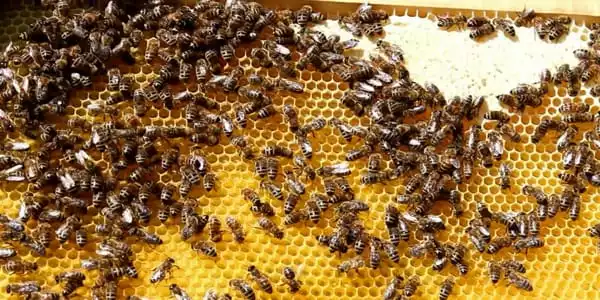Honeybees are the primary pollinators of approximately 73% of the world’s cultivated crops. Because bees are ectothermic, the temperature of their surroundings determines their activity, and thus climate change, characterized by higher temperatures, could have a significant impact on their biology, behavior, and distribution. Climate change has an indirect impact on bees via their floral resources and natural enemies.
Pollinators are critical to the health of ecosystems because they play an important role in plant reproduction. Plants reward pollinators with nectar in a symbiotic relationship, as pollinators help to spread pollen and allow plants to reproduce. Humans rely on pollinators for survival in the same way that we rely on plants for food and medicine.
Climate change affects pollinators by shifting growing and blooming seasons and potentially weakening plant populations on which pollinators rely. Warmer temperatures have also altered migration patterns, affecting pollinator species such as butterflies.
Our analysis clearly shows that a colony’s risk of contracting one of the diseases we studied is influenced by the weather conditions that the colony experiences. Our research reveals some intriguing contrasts, such as how rainfall can cause one disease to become more common while making another rarer.
Ben Rowland
A variety of diseases have wreaked havoc on honey bee colonies around the world. A new study has shed light on how changing weather patterns may be fueling disease in British colonies. The team led by Newcastle University published their findings in the journal Scientific Reports, finding that the most severe disease of honey bees, caused by the Varroa mite, increased as climate temperatures increased but decreased during heavy rainfall and wind.
Data collected from visits to over 300,000 honey bee colonies revealed how the prevalence of six important honey bee diseases interacted with rainfall, temperature, and wind in various ways.
Ben Rowland, a Ph.D. student at Newcastle University’s School of Natural and Environmental Sciences, who led the study, stated: “Our analysis clearly shows that a colony’s risk of contracting one of the diseases we studied is influenced by the weather conditions that colony experiences. Our research reveals some intriguing contrasts, such as how rainfall can cause one disease to become more common while making another rarer.”
Professor Giles Budge, who directs Newcastle University’s Modelling Evidence and Policy Group and was a senior author on the paper, stated: “We’ve known for a long time that weather can affect honey bees’ ability to leave the hive and forage for food, but learning more about how our climate affects honey bee disease is fascinating! This new information will aid in predicting how future climate change will affect honey bee disease.”

The study also looked into how weather affects disease hotspots. The South West of England was particularly vulnerable to disease caused by Varroa mites. Furthermore, the team identified a high-risk area for the notifiable and damaging disease European foulbrood in Powys, Shropshire, Herefordshire, and Worcestershire.
The major threats to honey bee health can be classified into four categories: parasites and pests, pathogens, poor nutrition, and sublethal pesticide exposure. In practice, however, these factors tend to overlap and interact with one another, further complicating matters. There are also other issues that have an impact on honey bee health, such as the limited genetic base of honey bees in the United States.
Researchers believe that the honey bee’s original habitats were tropical climates and heavily forested areas. Honey bees can live in both natural and domesticated environments, but they prefer gardens, woodlands, orchards, meadows, and other areas with a high concentration of flowering plants. To protect themselves from predators, honey bees build nests inside tree cavities and under the edges of objects in their natural habitat.
Many people believe that honey bees originated in Africa before spreading to northern Europe, eastern India, China, and the Americas. Honey bees, on the other hand, have been domesticated to produce honey for human consumption, and they can now be found all over the world in a variety of habitats.
Climate change is a global phenomenon that transcends national borders. The major factors driving this process appear to be industrialization and deforestation, which result in ozone layer depletion and increased carbon dioxide concentrations in the atmosphere. Global climate change is defined as a long-term shift in the statistical distribution of weather patterns spanning decades to millions of years. It could be a shift in average weather conditions or a shift in the distribution of events around that average.
Climate change can have a variety of effects on honey bees. It has the potential to have a direct impact on their behavior and physiology. It can also change the quality of the floral environment, increase or decrease colony harvesting capacity, and influence the development cycle. It is well known that each race of honey bees develops at its own rate. Any type of climate change or movement of a honey bee race from one geographical region to another is bound to have measurable consequences.
















